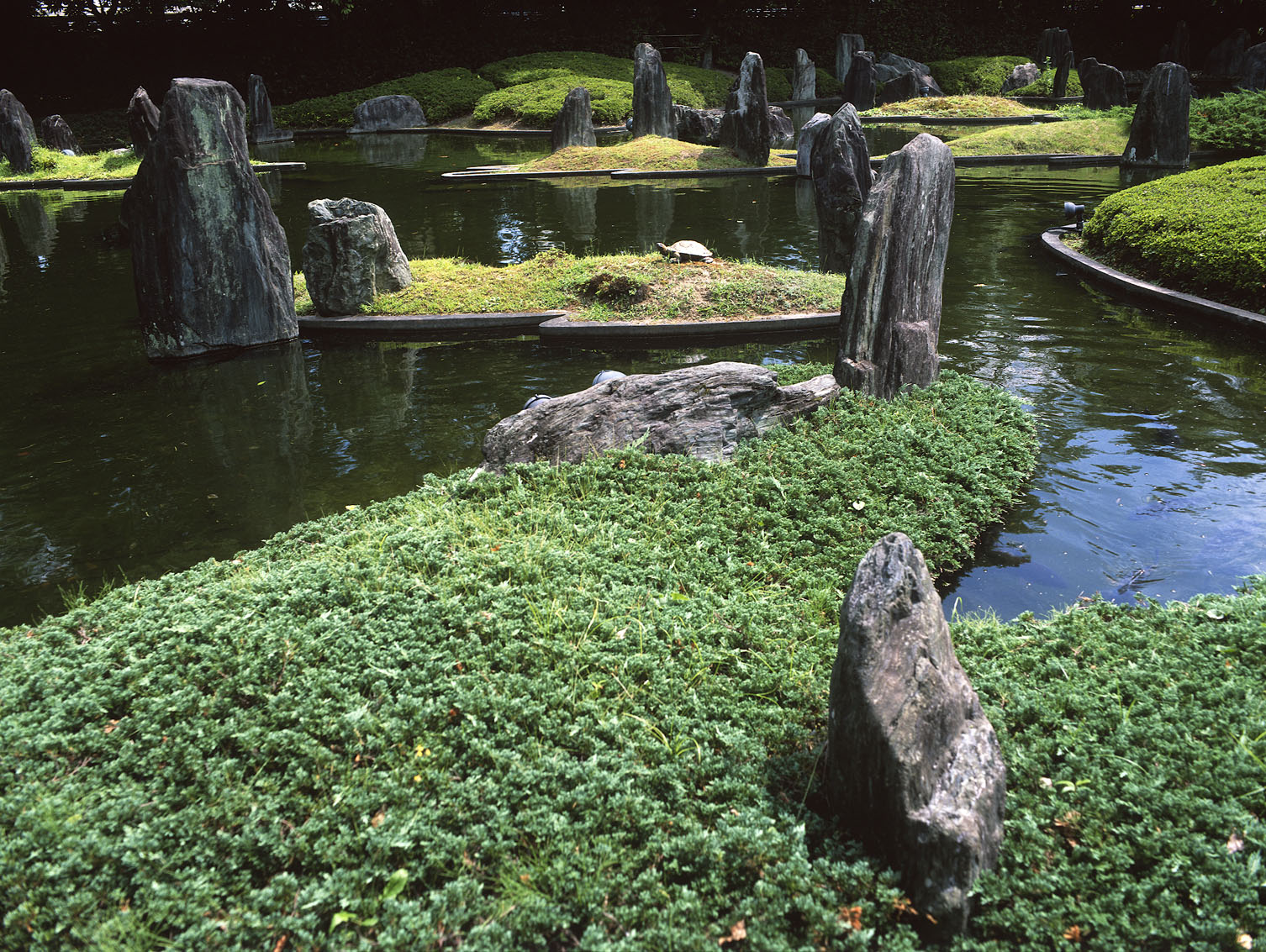When a new treasure house and building for ceremonies was constructed in 1971 at Matsuo-taisha in Kyoto, which dates back to 701 and is among Japan's oldest shrines, one of the most influential landscape designers of his day, the largely self-taught master Mirei Shigemori, was commissioned to create a series of gardens on the site.
Shigemori (1896-1975) frequently used the term "eternal modern" to represent his ideas and to define the aesthetic sense that qualifies much of his work. The expression, he explained, referred to his concept of the balancing of beauty; a parity between the classical and contemporary. Nowhere is the application of this term more evident than at Matsuo-taisha, where Shigemori was able to synergize tradition and modernity.
Growing up in a hamlet in a rural area of Okayama Prefecture in western Honshu, Mirei spent much time in the nearby town of Kibichuo, especially in the grounds of Yoshikawa Hachimangu Shrine, a rustic building founded in 1096 that emanates a markedly refined sense of beauty and proportion — a structure, in fact, that is replete with the temporal-spatial details that would influence his own aesthetic sense.



